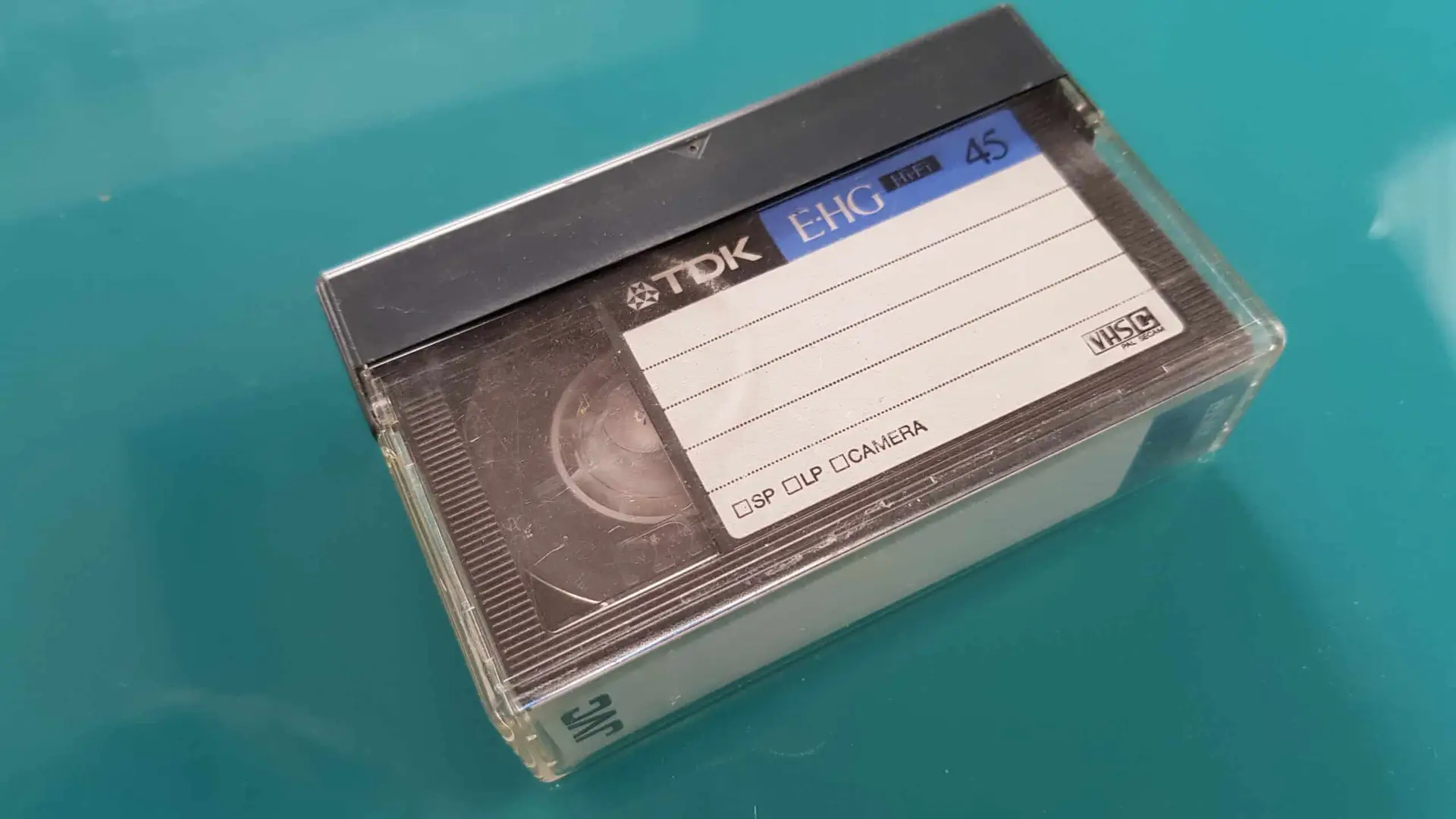


Details on Analogue Video Cassette (VHS Tape)
The world of home video recording and playback has been significantly shaped by the introduction of the Analogue Video Cassette. Commonly known as the VHS tape, this remarkable technology was pioneered by the Japanese Victor Company (JVC) in the late 1970s as a direct competitor to Sony’s Betamax format. In a rapid turn of events, VHS recorders quickly gained dominance in the domestic market.
One of the key strategic decisions made by JVC that contributed to VHS’s success was the decision to grant licenses to other manufacturers, enabling them to produce VHS products. This encompassed not only VHS recorders but also the essential video tapes that fueled this revolution. This open approach led to VHS machines becoming the global standard for home video recording systems, a position they held for many years.
The VHS format uses ½” tape, with the control track running along the bottom edge. Moreover, it featured a mono soundtrack positioned just above the control track, which represented the standard during the early days of VHS technology. Subsequently, as technological advancements continued, the introduction of hi-fi sound divided the mono track into two channels, resulting in left and right audio.
It’s worth noting that the development of Nicam stereo eventually superseded hi-fi sound. This breakthrough revolutionized sound recording by placing it between each picture frame. Nicam stereo has the advantage of providing high-quality audio, but it also comes with a limitation: once sound is recorded alongside your video, modifying or adding to it becomes challenging without resorting to tape editing or duplication, unless you choose to revert to using the mono soundtrack.
Regarding physical dimensions, the VHS cassette measures 187 x 102 x 25 mm, and this standard size played a significant role in its widespread adoption.
As technology continued to evolve, particularly in the realm of home movie recording, a significant shift occurred. Camcorders emerged as the primary choice for recording home videos, and the impracticality of full-sized VHS video cameras became evident due to their size and bulk. In response to this growing need for portability and convenience, JVC introduced a much smaller format called Compact-VHS or VHS-C in the mid-1980s.
The Compact-VHS format allowed users to record home movies in a more compact form. This smaller cassette, with dimensions of 92 x 58 x 20 mm, offered a solution that aligned with the trend of smaller, more portable recording devices. Notably, the videos recorded on VHS-C could be easily viewed on a standard VHS video recorder, thanks to the use of a convenient adapter, making it a versatile choice for those who wanted to share their memories with friends and family.
Recognizing the need for enhanced video editing capabilities without significant quality loss, JVC introduced Super-VHS, commonly abbreviated as S-VHS, in the United Kingdom in 1989. This format primarily targeted professional and semi-professional markets, making it a popular choice among videographers and gaining particular acclaim in the production of wedding videos.
Super-VHS delivered a significant boost in picture quality, boasting a remarkable 75% improvement compared to standard VHS. This improvement was achieved by separating the chrominance and luminance signals, resulting in sharper and more vibrant visuals. Additionally, Super-VHS introduced Nicam stereo sound, which marked a substantial improvement over the earlier hi-fi sound system used in original VHS camcorders.
One of the standout features of Super-VHS was its ability to facilitate video editing and the incorporation of special effects. It does this with minimal noticeable loss in both picture and sound quality. This innovative capability allowed videographers to produce professional-quality videos. Seamlessly reproduce them on a standard VHS tape, expanding the possibilities for creative video production.
In terms of physical dimensions, the Super-VHS cassette shares the same measurements as the standard VHS cassette, at 187 x 102 x 25 mm.
The evolution of the Analogue Video Cassette, represented by the VHS tape, has significantly impacted the world of home video. From its inception as a competitor to Betamax to the introduction of Compact-VHS for enhanced portability and, finally, the high-quality advancements of Super-VHS, this technology has left an indelible mark on the way we capture and preserve our memories. Whether it’s the iconic VHS format or its innovative variations, these analogue video cassettes have played a vital role in our visual history.